Does your bike tire keep going flat with no puncture? Just because you can’t find a visible puncture does not mean there is no leak in the system. Flat tires are an inescapable part of cycling. They can occur at any time, anywhere, and until you fix them, you can’t ride.
So, you learn to deal with them. Take them to the repair shop to get it fixed or become an expert at inspecting the tire and inner tube, a deft hand at patching a puncture.
Yet, sometimes, you encounter tires gone flaccid and flabby for seemingly no reason at all.
Why does a tire without a mark on it go flat, and how can you stop it? The answers to those questions depend on two main pieces of information: the tires you use and the valves they have.
Pneumatic Bike Tire
These are tires with inner tubes. Most cyclists choose this variant, as they are cheaper and simpler to maintain. If you have not intentionally upgraded to tubeless tires, this is the one you will have.
However, they are infamous for being easily punctured. Pins, nails, rocks, the sharpened edge of a rim — rolling over them is likely to leave your inner tube looking like Swiss cheese.
In fact, there is really only one form of leak that is unique to standard tires and isn’t due to an obvious puncture: a pinhole leak.
Pinhole Leak
Sometimes, something slender and sharp becomes embedded in the tire. You ride over it, and it just barely pokes through the rubber, reaching the inside.
From the outside, the tire is smooth and shows no holes. The inner tube is punctured but leaks very slowly and only when enough pressure is inside. Otherwise, the tension of the rubber will be enough to keep the minuscule hole compressed and hidden from view.
Worst of all, you can install a new tube, and it will be punctured as soon as you inflate it since the sharp object is still present in the lining of the tire.
So, first, how do you diagnose a pinhole leak?
- Fully deflate the tire and remove it from the rim.
- Before you separate the tire and inner tube, mark both to tell exactly how the tube was placed in the tire.
- Fill a container with water.
- Inflate the inner tube and submerge it into the water. Squeeze it, and look for bubbles. When you see them, mark the position of the leak.
- Take the tube and align it with the positioning mark on the tire, and note where the leak is in relation to the tire.
- Turn the tire inside out and visually inspect it, starting at that area. If you don’t see anything, slide a cotton ball along the inner lining. It will snag on the offending item, allowing you to locate it.
Once you’ve located the leak and the embedded object, fixing the problem is simple. You can extract the object using pliers or tweezers and patch the inner tube.
Tubeless Bike Tire
Tubeless tires are more resilient. They are lined with sealant that fills most punctures instantly. The pneumatic tire scenario above would go unnoticed with tubeless tires.
With the inner tube gone, the tire’s seal with the rim must be airtight. This is accomplished by a specially shaped tire bead and rim receptacle, which mate tightly when the tire is inflated. The patented Universal System for Tubeless, or UST, is considered the most reliable implementation of this process.
While this design is less prone to flats overall, it opens that door to truly punctureless flats caused by rim deformation and “burping.”
Rim Deformation
If a rim is bent such that the bead is affected, then it cannot achieve an airtight seal with a tubeless tire. The less severe the deformity, the slower the leak, but it will result in a flat either way.
To determine if this is the cause of your flats, remove the tire and carefully inspect the rim’s shape. Feel along the bead receptacle for any damage.
Additionally, if the rim is compromised by cracks or rust, such that air can flow through it, that will also defeat a tubeless tire.
Rims that have minor deformations can be repaired either at home if you are handy and have the tools or at a bike shop. Cracked or rusted rims should be replaced immediately, as they are unsafe to ride upon.
Burping
It is possible to apply so much lateral pressure to a tire that the bead momentarily disengages from the rim. If this happens to a pneumatic tire, it can escape notice. With tubeless tires, that brief break of the seal allows for a burst of air to escape, hence the name “burping.”
This phenomenon occurs most often when there are quality issues with the tire or rim. Non-UST tires, for instance, are more prone to this issue, as are tires mounted on more narrow rims.
The kind of pressure needed to trigger burping is most likely to be encountered during off-road riding, landing from high jumps. You will notice the sudden dramatic drop in air pressure, but upon checking for damage, you won’t find a thing.
Unfortunately, you can only be sure that burping occurred once you have thoroughly checked for all other possibilities. Fixing it will likely involve a change of tire, rim style, or foregoing hard riding on that particular bike.
Damaged or Failing Valves
There are two main types of tire valves: Schrader and Presta. Serving as the gatekeepers for airflow into your tire, each can also allow air to escape in different ways.
Schrader Valves
By far the most common valves, they are the same that you find on car tires or air pumps at the gas station.
On a bike tire, the valve stem protrudes from the inner tube or rim as a cylinder of uniform thickness, threaded at the top to hold the screw-on dust cap.
Looking at the top, there is a small metal pin in the center. This is the check valve. It is a spring-loaded mechanism that keeps air from escaping. You have to press down on it to let air out or pump it in.
That check valve is the first point of failure. If it is damaged, or if grit gets into the mechanism, it won’t be able to close fully, and air will slowly escape the tire.
If you suspect this, simply spray soapy water into the valve. The moment you see bubbles form around the check valve, you know that is the source of the leak.
In the case of dirt impacting the mechanism, clean the outer portion with a cotton swab. Then, inflate the tire and depress the check valve to attempt to dislodge debris in the mechanism with a blast of air.
A broken valve, on the other hand, should be replaced. The core of a Schrader valve can be removed with a valve core remover tool or a pair of thin needle-nose pliers.
If you are using the pliers, open them just enough to slide onto the flat surfaces located in the valve stem just below where the check valve ends, then screw the core out. Install the new core, making sure to tighten it well. A loose core is another way a valve can leak air.
Presta Valve
This valve was created for bike tires specifically. It is long and thin, with a tapered top. Instead of a cap, it is sealed with a nut called the valve head. Unscrewing it allows air to flow — there is no check valve.
Presta valves are much less likely to leak. If they do, it’s likely due to a loose core. You can check for leakage as you would with the Schrader valve, and if you do find it, you can easily tighten the core with pliers.
In the rare case that does not fix the problem, the valve is likely faulty, and you should replace it. Grip the flat sides of the valve stem, just below the threads, and you can unscrew the core. Replace it with a new one, and your problem should be solved.
So Why Does My Bike Tire Keep Going Flat?
There are many reasons why your tire keeps going flat even if you find no visible puncture. Surprisingly, the most common is a slow leak caused by sharp objects embedded into the tire.
They can be found in the form of tiny wire, glass particles, and staples but can be anything sharp and small but aren’t visible. That’s why they are challenging to detect and fix!
Further, narrower tires seem to lose air faster than others naturally. So, if you need to pump air into your thin Aero tires once each month, there is nothing unusual about it.
With older tires, failing or damaged valves are often the leading cause second to rim deformation caused by accidents. Your tires could be worn out beyond repair, exposing their internal fabrics.
Once exposed, one can not stretch it beyond a month or two and must replace it.
All other reasons why your bike tire keeps going flat:
- Hitting hard or sharp objects with low tire pressure.
- Uninspected damage leading to slow leaks.
- Defects such as the snake bite spoke holes and tire wear.
- Burping triggered by heavy off-road riding, landing from high jumps.
- Improper care of your tires over time leading to wear, faulty valves, and other internal damage.
- Damaged or faulty tube, tire liner, and rim tape.
Preventative Measures – Keep Bike Tires Like New!
Being able to diagnose and repair these issues is excellent, but the ideal scenario allows you to avoid the need to do so. There are ways to stop these problems before they happen, or at least before they cause a flat tire.
Pinhole leaks can be preempted by a combination of regular tire inspection and the use of self-sealing inner tubes. The tube’s sealant will prevent flats from developing, while the inspection will uncover any embedded debris before it does enough damage to be a problem.
To prevent rim deformation, you need wheels made to take punishment. Buy wide, carbon fiber rims with at least 32 spokes. They will resist deformation under heavy loads and hard impacts.
Burping is far less likely to occur if you buy UST-compliant tubeless tires and rims explicitly made to pair with them. Choose wider rims and tires as well, as they provide greater seal integrity under pressure.
As for the valves, simply keeping them clean goes a long way. Always keep the dust cap on your valves to avoid dirt contamination. Also, when putting air in your tires, use the correct nozzle head for the type of valve, and be careful when connecting them to avoid causing damage.


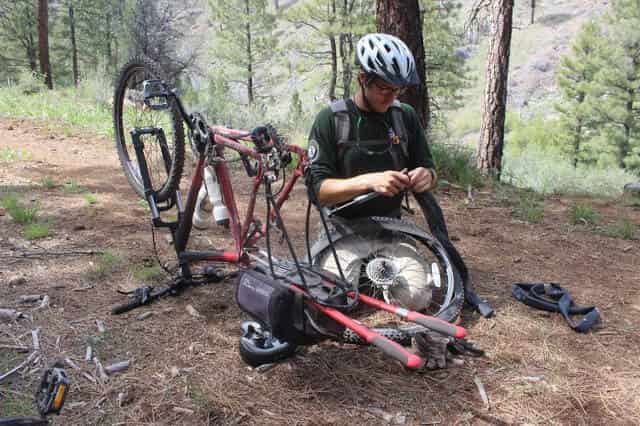


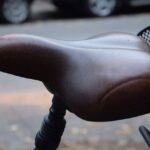

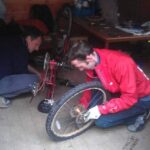
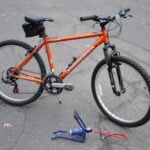



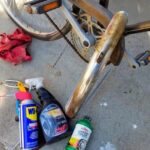
So basically this article says “If you can’t find the puncture, just find the hole and fix it..”
I understand your point, yes the article teach you more about what possibly may be wrong with your bike tire that is causing leaks / puncture rather than pressing more on issues like tire quality, wear and tear and simply age of tire itself. I will try to add these things in details next time I update this post.
Useful information for any cyclist.
Yes, it’s def important for cyclists to know why their bike tires are going flat.
Thank you for sharing